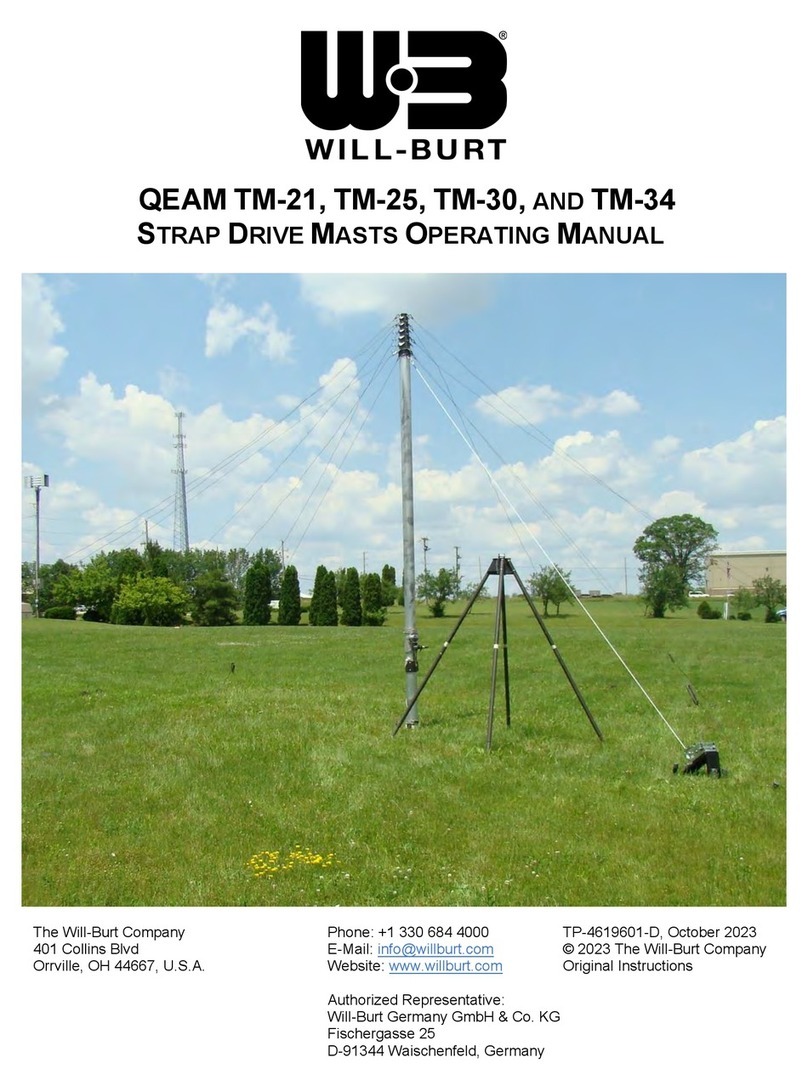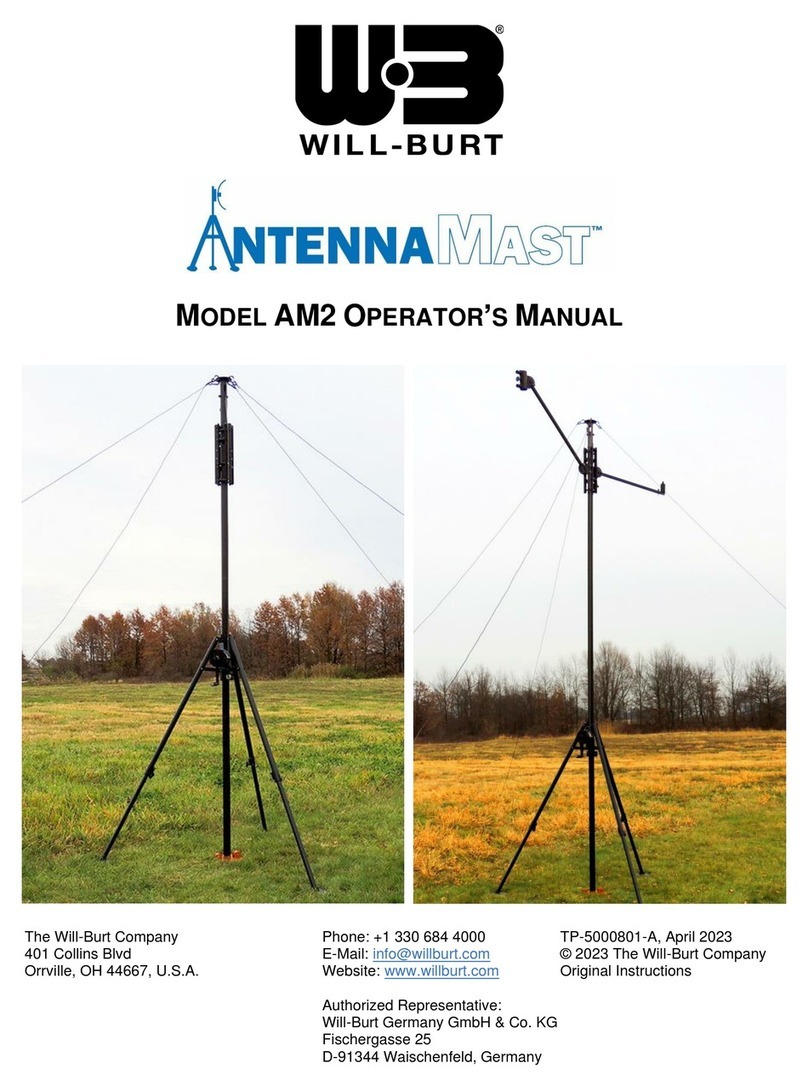
Safety Precautions
Per the ANSI Z535.4 standard, the following signal words and definitions are used to indicate
hazardous situations:
DANGER
indicates an imminently hazardous situation that, if not avoided,
will result in death or serious injury.
WARNING
indicates a potentially hazardous situation that, if not avoided,
could result in death or serious injury.
CAUTION indicates a potentially hazardous situation that, if not avoided,
may result in minor or moderate injury. It is also used to alert against
unsafe practices.
Lifting Hazard! In the UK, all lifting equipment must be thoroughly
examined annually by a trained person according to the Lifting Operations
and Lift Equipment Regulations 1998. Equivalent regulations exist in
other EU states.
Safety Instructions – Follow Procedure! Failure to follow drain kit
installation instructions could damage the mast and render the mast
inoperable. Read and understand the installation instructions before
installing the drain kit.
Do not deploy the mast if power lines are less than 80 ft. (24.4 m) from
the center of the deployment site.
Do not attempt to deploy the mast on soft or loose soil. The base plate
and guy stakes could become unstable under wind loading and cause the
mast to fall.
Do not attempt to deploy or retrieve this mast during electrical storms or
when winds exceed 20 mph.
The mast must be vertical before deployment. Adjust guy lines as required
until the bubble level indicates the mast is vertical.
Helmets or hard hats, eye protection, gloves, and safety shoes or combat
boots must be worn while working in the mast deployment area.
Throughout this document safety precautions that are related to specific procedures appear
in this publication for emphasis. These are recommended precautions that personnel must
understand and apply during specific phases of installation, operation and maintenance.
www.antennamast.com
Do not duplicate, alter, or copy without the written consent of e Will-Burt Company. © Copyright 2013 e Will-Burt Company
4































